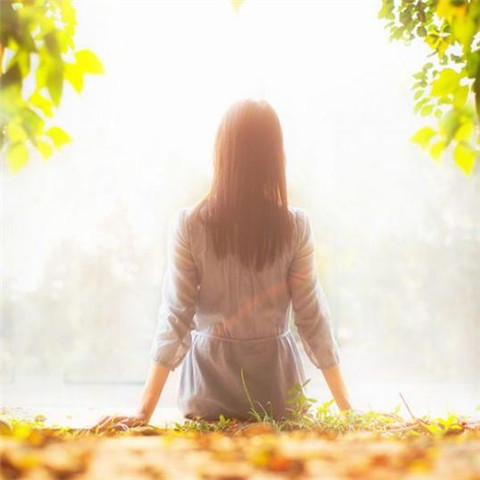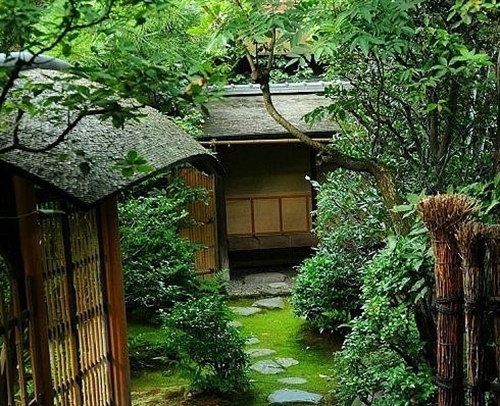
梵高名言
让我我自己的道路奋斗吧,不要丧失勇不要松劲。
人们必正地爱他的同类,我要尽可能地使自己具有这样的心。
在我的生活与绘画中,我可以不要上帝,但是像我这样的笨人,却不能没有比我伟大的某种东西,它是我的生命---------创造的力量。
为了工作,为了成为艺术家,一个人需要爱。
至少,要使他的作品不缺乏感情,他首先要自己感觉到这一点,并且,他要爱工作与爱生活。
一人绝不可以让自己心灵里的火熄灭掉,而要让它始终不断地燃烧。
。
。
。
。
你知不知道。
这是诚实的人保存再艺术中的最最终必要的东西
然而并不是谁都懂得,美好的作品的秘密在于有真实与诚挚的感情。
一个劳动者的形象,一条耕地上的犁沟,一片沙滩,广阔的海洋与天空,都是美的。
终生从事于表现隐藏在它们之中的诗意,确实是值得的。
我总是全力以赴地画画,因为我的饿最大愿望是创造美的作品。
绝不要以为故去的人永远逝去,只要有人活着,故去的人就永远活着,永远活着。
我认为这是伟大人物经历中的一幕悲剧。
。
。
。
他们往往再作品被工作所承认之前便死了。
在它们活着的时候,他们遭受着为生存而斗争中的障碍与困难的不断压迫。
我的作品就是我的肉体和灵魂,为了它我甘愿冒失去生命和理智的危险。
不少画家害怕空白画布,但空白画布也害怕敢帽风险的、真正热情的画家。
画家------只接受死亡和埋葬,以他们的创作,对下一代或下几代人说话。
在画家的生活中,死亡也许不是最难过的事为了它,我拿自己的生命去冒险;由于它,我的理智有一半崩溃了;不过这都没关系…… 爱神是对我说来,像一本福音书一样,是一次革命。
女人是不会老的。
这并不是说没有老女人,而是说她爱着别人的时候与被人爱的时候,女人是不会老的。
女人是与男人完全不同的生物,是我们一直到现在还不理解的生物。
至少可以说,只有表面上的理解——是的,我相信是这样的。
男人与妻子能够结合在一起,这就是说,他们形成一个整体,而不是两个一半——是的,我也相信如此。
我应该接受她的‘不,永远永远不’,还是应该抱着一点希望而不把她放弃呢
我选择了后一条道路——我并不对这个决定表示后悔。
始终爱着她,一直到她爱上我。
表姐曾经爱过别的人(指的是她去世的丈夫)……我知道她经常回想过去,并且专心致志地把自己埋葬在过去的记忆里。
然而我这样考虑:虽然我尊重这种感情,虽然她那严重的忧郁使我感动,但是我以为这里有宿命论在作怪。
所以不能让它摧毁我的心。
我要想法子创造某种新的东西…… 我已经坚决地不离开她……除了‘一心一意只爱她’这个思想以外,我没有别的思想。
然而我们的大多数工作都是凭我们的智力来做的——用手腕,用精打细算。
但若现在开始恋爱,瞧吧,你将会发现还有另外一种力量使我们行动,这就是心…… 我的肉体的热情是非常淡漠的,但是我精神上的热情却是强烈的。
当一个人恋爱的时候,他不仅必须给予,而且同时也取得。
提奥,对我来说,在这种脆弱的凋萎之中,在生命已经逝去的某种事物之中,有一种不可思议的诱惑力。
我不止一次地不能抵抗爱情,常常是对那些被牧师在教运上加以指摘的,认为是有罪与歧视的女人充满着爱。
常常当我穷得身无分文,非常孤单地、像生了病似地在街上漫步的时候,我注意着她们,并且对那些与她们一起走的男人感到嫉妒;我感到这些穷姑娘,就她们的所处的环境与她们的遭遇而论,是我的姐妹。
我明白,这是我的一种老感觉,它是根深蒂固的。
当我还是小孩的时候,我常用无限同情,甚至是尊敬的眼光,仰望着衰老妇女的面孔,在这种面孔上好像写着:实际的生活在这儿留下了痕迹。
因为我见到过许多弱者给踩扁了。
我对许多被称之为进步与文明的东西的真实性产生了极大的怀疑。
我相信文明,但是我只相信以真实的人性为基础的那种文明。
而牺牲人性的文明,我认为是残忍的,我不尊重这种文明。
人们必须遵守作为每一种道德基础的起码东西。
她没有一点惊人之处,她只是一个普通的平凡妇女,她与我比较起来,有些高尚的品格。
谁要是爱上一个平凡的人,而且被她所爱,尽管生活苦些,但却是幸福的。
要是我没有遇上西恩(即克里斯汀)的话,或许我已经变成一个冷淡的、对什么事情都抱怀疑态度的人。
当一个男人在他所爱的女人旁边,他们附近摆着一个有婴孩的摇篮的情况下,一种强烈而有力的感情便会把他抓住。
我所需要的是挽救西恩的生命,与她的两个孩子的生命。
我不愿意她陷入我初见她时那种贫病交加的可怕境况。
我不愿意她始终感到自己是被抛弃的与孤独的。
我已经负起这个责任,我还要继续负起这个责任。
我的忧伤唤醒了一种同情别人的需要。
所以在我看来,西恩首先是一个像我一样孤独而不幸的同病相怜的人。
女人在她爱上别人与被别人爱着的时候是会变样的。
女人所需要的,是与一个男人在一起,永远与他在一起。
在今天,每一件事都是匆匆忙忙杂乱无章的搞出来的,我不喜欢这种现象,好象一切事物都已经失去了生命。
但是如果人们感到需要感受某种宏大、无限的,使人感知到上帝的东西。
他不需要到远处去找它。
我以为我在婴儿的眼睛里,看到了比海洋还要深,还要无限,还要不朽的某种东西。
最初,爱情脆弱得好象蜘蛛网,可是它会逐渐变得强如巨缆。
但是只有在忠于爱情的情况下才会这样。
爱情也跟自然界一样,有枯萎的时候与发芽的时候,但是决不会死亡。
人们必须注意不要退缩在暧昧、黑暗、故意的错误上,人们更须避免象刷白的墙壁那样的白色,我指的是伪善。
一个遵循理性与保持诚实的人,几乎完全不可有迷路,虽然他不会有完满的成功,但是也不会犯错误与遭到失败。
一个人即使被列入到平凡人之中,完全感到自己是普通人中间的一个普通人。
可是他在最后将会变得相当的沉着。
他将成功地把他的良心提高到更高的阶段,因此他的声音属于一个更好的与更高的自我,普通的自我是这个自我的仆人…… 我现在已经完全宽恕一切与不以为然了,心中没有别的念头。
我将像过去那样保护她。
我心中的怜悯心是那样强烈,以至于在它的前面一切都要让路……我像从前那样对她说:只要我还有一片面包与一片藏身的地方,就要与你一块分享。
这在过去不是出于一时的感情冲动,在现在也不是出于一时的感情冲动,这是把彼此的需要看成是头等重要的事。
提奥,照她现在的情况来看,她有了改进,但是人们必须三番五次地坚定她的意志,她可能使人灰心丧气。
但是当她要说明她的主张与思想的时候,尽管她是妓女,她是多么纯洁啊
在她心灵废墟的深处,还保存着某种东西。
在那样罕见的时刻,她的样子就像德·拉克罗瓦画中的一个痛苦的圣母,或者阿莱·谢菲尔画的某一些头像。
这是我所相信的东西,我现在又重新发现了它,我尊重她浓厚的感情。
我不知道我与西恩在将来是不是会幸福,可能不会幸福——肯定不会幸福——从但是幸福不幸福并不是我们负得了责任的事。
你或许不能够一清二白地过日子,但是要尽可能走正道,我也要努力这样做。
只要我知道你已经尽了力,没有以每一件事失去控制,你像我一样对小孩善良,你的行动在孩子眼里始终像个母亲。
虽然你只是个穷仆人,虽然你只是一个穷妓女,并且还有各种讨厌的缺点,你在我的眼里将始终是一个好人。
我时常伤心地想起西恩和孩子——只要她们能够活下去就好了,唉,人们或许要说,这是西恩自己的过失,但是我担心她们的遭受的不幸会大于她的过失。
当我现在看到那样一个患热病的、不幸的、可怜的人时,使我深深地感动,使我的心软下来。
生活中有多少令人心酸的事啊
关于梵高绘画的情感表达一定要自己写的
梵高绘画的情感我对此人走着深刻的认识,他想要表达出的东西其实也就是表现事物的内在表现,他是真正爱画画爱生活的人,他晚期的作品已经是一个艺术家到了顶峰以后的超越,就像中国书法家那样,到了境界就不在限于楷书或是行书和草书,有可能是另外的一种表达感觉,在是与不是之间。
梵高后期的绘画,尤其是那种生活在两界的人生,让他感受到了精神上面的突破,一边患有神经分裂,一边不停创作,可以说是精神病让他对于自己的艺术有了更深一步的发现,所以后面表现出来的那些画作,让人震惊和感叹,这才是一个艺术家真正情感流露的结果。
关于“梵高”的名人名言有哪些
梵高的绘画技艺可用栩栩如生,妙笔丹青,细腻独到来形容
梵高的画多采用什么绘画手法
一. 梵高画的特点 1.多使用鲜艳和火辣辣的色彩,以及具有运动感的、连续不断的、波浪般急速流动的笔触,构成他绘画的特色 2.把所描绘的对象,当作表现自己热烈激动的主观感情的媒介、当作表现自己独特艺术手法的媒介,以表达他的主观感受和激情 3.尤其是在色彩和对事物的形体塑造上的方法,发展到更加独立于传统之外的地步二. 代表作品 静物《向日葵》、人物自画像《割了耳朵的凡高》、室内画《夜间咖啡馆》,还是风景画《星夜空》、《向日葵》
用什么词语来赞美梵高绘画技艺高超
梵高的绘画技艺可用栩栩如生,妙笔丹青,细腻独到来形容
梵高的绘画风格
没办法编辑文本,只能都给你这样直接放上了【星夜】The Starry Night1889Oil on canvas29 x 36 1\\\/4 in.The Museum of Modern Art, New York---------------------------------------------------------------'The Starry Night' was not Van Gogh's first depiction of a night sky. In Arles, he had been proud of his painting of the stars and the reflection of the lights of the town in the River Rhône, one of the first results of a plan intimated to Emile Bernard in April 1888. He wanted to paint a starry night as an example of working from the imagination, which could add to the value of a painting: 'we may succeed in creating a more exciting and comforting nature than we can discern with a single glimpse of reality', he wrote. In a letter to Theo of the same date, Vincent was more explicit about the motif: 'a starry night with cypresses or possibly above a field of ripe wheat'. With his 'Starry Night', painted in Saint-Rémy, he fulfilled that promise and did so at a time when he was more determined than ever to prove himself the equal of his fellow artists.Van Gogh also mentioned as a joint aim 'a kind of painting giving greater consolation'. This supremely religious aspiration was no longer related to the Christian ethic for Van Gogh. His insistence that the canvases were not a return 'to romanticism or to religious ideas', though somewhat puzzling at first, was intended only to show that the works had nothing in common with earlier mystic paintings. He had once admired religious subjects from ancient art, but he now considered that the feeling of solace should primarily be evoked by the colour and design of representations of nature. [...]'The Starry Night' should be seen as [...] based on religious ideas only in this specific sense.The artistic solution chosen by Van Gogh for these canvases lay in a compelling form of stylisation. The landscape with hills - in which he had attempted 'to render the time of day when you see the green beetles and cicadas fly up in the heat' and 'The Starry Night' were, he wrote later, 'exaggerations in terms of composition' with lines 'warped as in old woodcuts'. Van Gogh was referring to the somewhat primitive, coarse illustrations in the household edition of the works of Dickens rather than to the carefully executed wood engravings in contemporary magazines. in the drawings which he also made after these paintings, this abstraction has been taken a step further.'The Starry Night' in particular was an attempt by Van Gogh to create a masterpiece on a par with the very stylised work of Gauguin and Bernard. The graphic style adopted by Van Gogh was not an obvious choice to achieve a nocturnal effect in which surfaces and silhouettes would normally play a greater role than lines. The style is in this sense rather artificial, and the same can be said of the scene itself, put together as it is from different studies from nature.Van Gogh may have had doubts about the painting, but subsequent commentators have elevated 'The Starry Night' to a place among his most exceptional and important works. The combination of style and religious overtones has fuelled endless critical debate. Several authors have investigated the extent to which Van Gogh's night sky is true to life, but the science of astronomy has failed to produce an unambiguous answer. In the light of Van Gogh's opinions this is hardly surprising: he was permitting himself the artistic freedom which Bernard and Gauguin also exploited. =============================================================【夜间的露天咖啡座】Cafe Terrace on the Place du ForumSeptember 1888Oil on canvas81 x 65.5 cmRijksmuseum Kroller-Mueller, Otterlo--------------------------------------------------------------Vincent van Gogh's The Cafe Terrace stands as one of the painter's most remarkable works. It is also, without question, one of the most famous produced in Van Gogh's brief but prolific career. This work is the first in a trilogy1 of paintings which feature starlit skies. Starry Night Over the Rhone came within a month, followed by the popular Starry Night painted the next year in Saint-Rémy. An interesting companion to these three can be found in the Portrait of Eugene Boch (painted in the same month as Cafe Terrace and Starry Night Over the Rhone)--note the starry motif in the work's background. Vincent was enthusiastic about The Cafe Terrace and wrote to his sister Wil: In point of fact I was interrupted these days by my toiling on a new picture representing the outside of a night cafe. On the terrace there are tiny figures of people drinking. An enormous yellow lantern sheds its light on the terrace, the house and the sidewalk, and even causes a certain brightness on the pavement of the street, which takes a pinkish violet tone. The gable-topped fronts of the houses in a street stretching away under a blue sky spangled with stars are dark blue or violet and there is a green tree. Here you have a night picture without any black in it, done with nothing but beautiful blue and violet and green, and in these surroundings the lighted square acquires a pale sulphur and greenish citron-yellow colour. It amuses me enormously to paint the night right on the spot. They used to draw and paint the picture in the daytime after the rough sketch. But I find satisfaction in painting things immediately. (W7: 9 and 16 September 1888) Vincent goes on to tell Wil that there is a description of a similar cafe in the book Bel Ami by Guy de Maupassant: . . . a starlit night in Paris with the brightly lighted cafes of the Boulevard, and this is approximately the same subject I just painted..2 Van Gogh's works are often inspired by literary references or by the works of other painters (see his copies after Jean-François Millet). Cafe Terrace has a similar style and compositional structure to Avenue de Clichy in the Evening by Anquetin. Regardless of whether Van Gogh was directly inspired by Anquetin's work, the composition of Cafe Terrace is unique among all of Van Gogh's oeuvre. Note how the lines of composition all point directly to the centre of the work where a horse and carriage are found. Everything seems to be drawn inward, like a vortex, and yet the overall tone suggests tranquillity and not turmoil. The overall scheme is dark, but without the slightest trace of black. More than one hundred years after Vincent painted it, the Cafe Terrace is still in Arles serving drinks to its thirsty patrons. It's now called the Cafe Van Gogh, appropriately enough, and has been remodelled to appear as it did more than a century ago--yellow-lit awning and all. I stopped and had a cognac when I visited Arles in 1995 (you won't find absinthe on the menu any more) and thought of Vincent, so close by in spirit, working feverishly (but contentedly) under the stars. ------------------------------------------------------------1. The idea of a trilogy of starlit paintings is a constructed one. Vincent himself never envisioned such a trilogy.2. Vincent is mistaken--in fact, the Maupassant reference he is thinking of is found in the novel Yvette.



